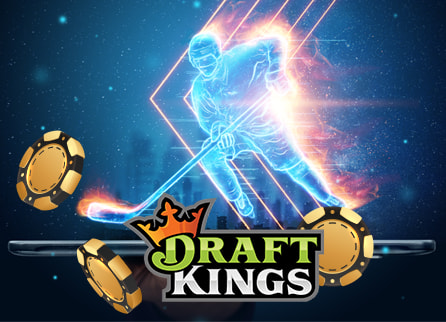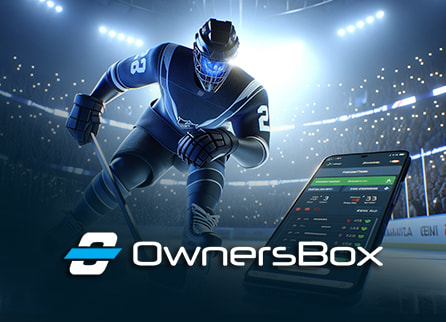Best Fantasy Hockey Sites for 2026
Unlock the best DFS platform for competing in daily fantasy hockey as rated by our expert staff. Sign up to an excellent feature-packed fantasy hockey site, by choosing from our top picks.
Top Fantasy Hockey Apps for January 2026
Our experts did the heavy lifting testing and rating all the legal daily fantasy hockey sites. Each DFS service we recommend has excellent value for any type of player, and the table below will help to point out the ideal option.
Choosing to play on these recommended platforms offers several advantages. They are designed to cater to a wide range of players, from beginners to experienced players. With features like low entry barriers and private leagues, they provide flexibility and a competitive edge suited for different skill levels.
Moreover, these are some of the best daily fantasy sites in the US, so you can also play various other sports. As top platforms, they are also equipped with modern interfaces, diverse payment methods, and fast support options. These integral features enhance the overall user experience and make them even more trustworthy.
DraftKings Daily Fantasy – Best Site for Fantasy Ice Hockey

DraftKings Daily Fantasy is one of the leading fantasy ice hockey sites, with a user-friendly interface and many contest options. It allows you to assemble virtual teams of real ice hockey players and compete against others for points based on the players’ statistical performances in actual games.
The platform offers daily and weekly NHL fantasy contests, including public and private leagues, where friends can compete. You can quickly enter a match any time before the lineup locks, while cash prizes are paid out as soon as the tournament ends. DraftKings is also popular for its innovative “Pick6” contests. Those involve participants in predicting if athletes will surpass statistical projections in real events, competing in lineups of 2 to 6 players for prizes.
ParlayPlay – Top Site for Fantasy Ice Hockey Beginners

ParlayPlay is one of the newest DFS ice hockey sites but has already won a large fan base. The platform’s legally operating in multiple US states, meaning you can compete with players nationwide. What’s great about the website is the flexible payment methods – you can deposit up to $1,000 daily via debit or credit card.
A distinctive trait of ParlayPlay is the Free2Play contests, which are run several times a week. There is no entry fee. The idea is to achieve a top spot on the weekly leaderboard and try to win the cash prize. To participate, you must pick one of the athletes in the pre-selected lineups and predict if they will go higher or lower than their projected point value.
OwnersBox – Excellent Bonuses for Fantasy Ice Hockey

One of the top fantasy ice hockey apps is provided by OwnersBox. It’s available in 36 states and is rated an impressive 4.7 out of 5.00 on the App Store, highlighting players’ satisfaction with the mobile design and overall optimization. The same vote is found on Google Play, showing that it functions just as smoothly on Android.
OwnersBox offers an innovative feature – Lightning Lineups. To try it, select the fantasy ice hockey lineup you think will score the most points. If you don’t like the players in the lineup, you can click “Spin” as many times as you want to create a team you like. Then, choose an entry amount and watch the team play live to discover if you win.
Best Daily Fantasy Ice Hockey Sites by Category
| 🥇 #1 Fantasy Ice Hockey Site | DraftKings |
| 🎁 Best Bonus | OwnersBox |
| 🔝 Newest Site | ParlayPlay |
| 📱 Best Fantasy Ice Hockey App | DraftKings |
There are many daily fantasy ice hockey sites in the US, but so many options can make it challenging to pick the right one. Depending on the state, the platforms must be authorized by official regulatory bodies, such as the New Jersey Division of Gaming Enforcement, the Pennsylvania Gaming Control Board, or another.
: To make your choice easier, we also highlighted the categories in which they excel. We’ve evaluated each of their licenses, fair play audits, contest variety, promotions, and mobile compatibility to correctly categorize each service.
Recommended Fantasy Ice Hockey Website for January 2026
The following platform has an appealing welcome offer, but this isn’t the only reason we positioned it as number one among the best fantasy ice hockey sites. At DraftKings, you can participate in public and private tournaments – there is the possibility of winning a payout even if you don’t finish first. You can also join the Dynasty Rewards program and earn redeemable tier credits.
What Is Fantasy Ice Hockey – Getting Started

Fantasy ice hockey is a virtual sport in which participants act as managers of imaginary ice hockey teams made up of real players from various teams in a league. The fantasy teams compete against one another based on the statistical performances of those players in actual games, whether they play in the NHL, AHL, ECHL, or another league.
In fantasy ice hockey, you draft players to create a team. Your team’s performance is based on real-life stats that your drafted players accumulate in their respective games. Winning depends on goals, assists, saves, and other scoring categories.
DFS sports like ice hockey are legal in all US states except Washington, Montana, Idaho, Nevada, and Hawaii. Such contests are regulated by both federal and state law. They are exempt from the Unlawful Internet Gambling Enforcement Act (UIGEA), but each state has the power to decide whether to authorize them or not. Before you sign up for any fantasy ice hockey app for Android, iOS, or desktop, ensure your jurisdiction allows it.
How to Play Daily Fantasy Ice Hockey
Playing daily fantasy ice hockey isn’t difficult, but a deep understanding of the game rules is essential for success. To get started, you’ll need to download a fantasy ice hockey app for iPhone, iPad, or Android and register. From there, you can join contests and create your team based on a salary cap, selecting players from different teams to form your lineup.
If you know the game dynamics, that can benefit your fantasy ice hockey draft strategy. Familiarity with player performances and staying updated with league news throughout the seasons can also increase your chances. The key is choosing a well-rounded team that can accumulate points across various statistical categories in real-life matchups. Finding a fantasy ice hockey podcast or following a topical YouTube channel can help you stay on top of the latest news.
The Draft
The draft is the first step in forming your fantasy ice hockey team. If you are in a re-draft league, you must select a new team each year. Drafts typically occur just before the NHL season begins, allowing players to choose based on the latest team rosters and player conditions.
A common draft pattern in fantasy ice hockey involves a serpentine or “snake” draft, where the order reverses each round. This means if you pick last in one round, you will pick first in the next, balancing the advantages. For a standard fantasy ice hockey team, you typically select:
- 2 centers
- 2 left wings
- 2 right wings
- 4 defensemen
- 2 goaltenders
Scoring Formats
The best sites for fantasy ice hockey use various scoring formats, but the points-based system is the most common. In this system, players accumulate points for their fantasy team based on their performances in specific statistical categories during real games. This scoring format rewards offensive achievements like goals and assists and defensive actions such as saves as follows:
- Goal scored: 3 points
- Assist: 2 points
- Goalie win: 3 points
- Goalie shutout: 2 points
- Saves: 0.2 points
- Penalty minutes: 0.5 points
In addition to the basic scoring rules, fantasy ice hockey incorporates additional points for various player activities. Players earn or lose points depending on their plus/minus rating, which reflects their presence on the ice during even-strength or shorthanded goals (SHG). Additionally, players can gain extra points for scoring or assists while on the power play, typically adding points to their total.
The system also rewards players for shots on goal, typically awarding around 0.5 points per shot, encouraging the selection of frequently shooting offensive team members. Hits are valued as well, with each physical hit potentially adding about 0.2 points to a player’s score.
Before Gameday
Before gameday in fantasy ice hockey, you should optimally set your lineup. Confirm that all starting positions are filled and select the best players for each position based on their current performance. A good daily fantasy ice hockey advice is to double-check the league schedule to have your lineup ready in time for the games.
In a standard re-draft league, weekly checks are necessary to adjust your team for the best possible outcome. You should also consider the players’ health status, as last-minute injuries can affect their availability and performance. Pay attention to fantasy ice hockey news and NHL updates for trades or line changes that might impact player roles.
The Waiver Wire
In a fantasy ice hockey league, the waiver wire is a system for managing player transactions. When players drop out from a team, they go on the “waiver wire”, where they remain for a designated period, usually a couple of days, during which the managers can claim them. The priority for claims is typically in reverse order of the league standings, giving an advantage to teams lower in the rankings.
Using the waiver wire effectively can strengthen your lineup. It allows you to pick up undervalued players who may have been dropped by others but could have favorable upcoming matchups or have shown improved performance. By strategically claiming players off waivers, you can address weaknesses in your team, replace injured players, or adapt to the changing dynamics of the league.
Player Trades
Player trades in DFS ice hockey involve swapping players between different teams within your league. You can use this strategy to address weaknesses, balance your team, or use players’ potential. When considering a trade, it is crucial to evaluate both the short-term benefits and the long-term impact on your roster.
Before making a trade on fantasy ice hockey apps, ensure it will improve your team based on the league’s scoring system and your current needs. A good practice is to analyze the trading partner’s roster to find mutually beneficial opportunities. You should also consider the schedule and playoff implications of the players involved and stay informed about eventual injuries.
Fantasy Ice Hockey League Types
You will find several types of leagues at the best apps for fantasy ice hockey. Some of the most popular are the head-to-head leagues, where you compete against a different manager each week, and the rotisserie (or “roto”) league, where teams are ranked from best to worst.
The choice of league type matters because it influences your drafting strategy, player selection, and management decisions throughout the season. For example, in a head-to-head league, weekly matchups might require you to focus on short-term performance, while roto leagues reward long-term consistency across all categories. Understanding these differences is key to tailoring your approach and improving your chances of success.
Draft
Hockey pools can be draft or non-draft. In a draft pool, no player can be owned by multiple teams, and all participants take turns drafting their team members. You usually use the serpentine type of drafting, where the team picking first in the odds rounds will pick last in the even rounds.
Such an approach requires ongoing attention throughout the season, going far beyond the top-tier NHL stars. In comparison, a non-draft pool allows everyone to pick a set number of players, allowing more than one participant to have the same player in their roster.
Draft Only
A draft-only league in fantasy ice hockey means all decisions are made during the initial draft – no trades or waiver wire pickups are allowed after that. This format requires careful planning and foresight, as your initial roster must last the entire season or tournament, demanding strategic depth in player selection.
Best Ball
Fantasy ice hockey apps organize “Best Ball” leagues where you draft your team and run it without any active management. There are no trades or lineup changes – the system automatically selects your highest-scoring players each week to form your lineup. Strategic drafting is crucial since no active roster changes are allowed post-draft, similar to draft-only contests.
Dynasty
You can also join dynasty leagues at the best fantasy ice hockey sites. These tournaments allow you to keep most or all your players across multiple seasons. The format is based on long-term strategy and player development, requiring a deep focus on the draft phase and following league trends.
Legal Situation – States with Legalized Fantasy Ice Hockey
Daily fantasy ice hockey is legally recognized in most US states. Each state has its own set of regulations governing fantasy sports, with local regulatory bodies issuing licenses and monitoring player protection policies. Before signing up at a platform, we encourage you to verify the legal status of fantasy sports in your respective state.
- Alabama – Legal
- Alaska – Legal
- Arizona – Legal
- Arkansas – Legal
- California – Legal
- Colorado – Legal
- Connecticut – Legal
- Delaware – Legal
- Florida – Legal
- Georgia – Legal
- Illinois – Legal
- Indiana – Legal
- Iowa – Legal
- Kansas – Legal
- Kentucky – Legal
- Louisiana – Legal
- Maine – Legal
- Maryland – Legal
- Massachusetts – Legal
- Michigan – Legal
- Minnesota – Legal
- Mississippi – Legal
- Missouri – Legal
- Nebraska – Legal
- New Hampshire – Legal
- New Jersey – Legal
- New Mexico – Legal
- New York – Legal
- North Carolina – Legal
- North Dakota – Legal
- Ohio – Legal
- Oklahoma – Legal
- Oregon – Legal
- Pennsylvania – Legal
- Rhode Island – Legal
- South Carolina – Legal
- South Dakota – Legal
- Tennessee – Legal
- Texas – Legal
- Utah – Legal
- Vermont – Legal
- Virginia – Legal
- West Virginia – Legal
- Wisconsin – Legal
- Wyoming – Legal
- DC – Legal
Daily fantasy sports are broadly classified as a game of skill, which is why most US legislations allow them. However, there was and is still a debate over their categorization, with some viewing it as a form of gambling. This perspective has led to its prohibition in several states, including Washington, Montana, Idaho, Nevada, and Hawaii.
How to Pick the Best Fantasy Ice Hockey Sites
You need to consider several factors to choose one of the best sites for daily fantasy ice hockey. Before finalizing our list, we followed the usual quality criteria, starting by verifying each platform’s security and licensing. We also evaluated the bonuses, the quality of mobile apps, and the diversity and reliability of payment methods.
While the top fantasy ice hockey sites offer a range of benefits, the final choice comes down to personal preferences. To help you choose your best match, we selected platforms that tick all the boxes regarding safety and overall performance. You can learn more about our quality criteria in the following lines.
Security and Licensing
Fantasy ice hockey apps and websites usually display their licenses at the bottom of their homepage or within their “About Us” or “Legal” sections. Licensing varies by state, with different regulatory authorities overseeing and issuing permits. For specifics on the regulations relevant to your state and the legal status of a site, consult your state’s gaming commission’s official website.
All the DFS ice hockey websites we chose are legal in the respective states where they obtained licenses. If you do research on your own, check your local gaming regulator and look for its logo on the chosen website or app. Collaborations with organizations like the American Gaming Association or the Fantasy Sports & Gaming Association are a sign of trustworthiness, while responsible gambling partners must also be present.
Best Bonus Offers
DFS promotions that match your deposit at 100% are not that common. The matching percentage is usually lower, and you need to pay attention to the validity period. The minimum deposit for becoming eligible is usually $5 – $10, while wagering requirements shouldn’t exceed 30x.
Top Fantasy Ice Hockey Apps
Mobile compatibility is something that all reputable gaming platforms provide. We chose the best fantasy ice hockey apps based on user experience, loading speed, and usability. Key factors considered include the app’s interface design, the variety of contest types, performance stability, and customer support responsiveness.
Available Payment Methods
The best fantasy ice hockey app for Android or iOS should accept reliable payment methods, including debit cards, e-wallets, prepaid cards, and bank transfers. All banking options usually require a minimum deposit of $10, while the maximum you can transfer is usually $1,000 per day. Regarding withdrawals, all methods are eligible except for prepaid cards.
- Visa
- Mastercard
- Discover
- American Express
- Bank Wire Transfer
- Apple Pay
- PayPal
- Play+
- Venmo
- PayNearMe
- Online Banking
Deposits at the daily fantasy ice hockey apps and websites are instant. Withdrawals follow a different procedure, as they need to be approved by customer support first. Upon approval, you can receive your prize within 1 – 5 business days. PayPal withdrawals are among the fastest, with processing times up to 48 hours.
Pros and Cons of Playing Fantasy Ice Hockey
Participating in a fantasy ice hockey league has many positive aspects, such as the entertainment and engagement it provides. Another advantage is that you can organize private leagues among friends and online communities, which encourages social interactions through competitions.
Yet, drafting a DFS ice hockey team can be time-consuming and requires you to follow the industry news closely. Developing a successful strategy requires you to follow all updates, including injuries and performance statistics. However, beginner-friendly daily contests are available, and you can use them to perfect your approach.
- Strategic approach
- Skill development
- Potential of winning prizes
- Daily and weekly contests
- Dynasty leagues
- Not beginner-friendly
- Time-consuming
- Unpredictable factors like injuries
Responsible Gambling
Playing DFS sports is considered a skill, but it can still trigger compulsive gambling behavior. Such indications include a preoccupation with gambling, chasing losses, and playing with real money despite financial consequences. In the US, all licensed platforms offer self-exclusion programs, deposit limits, and time management tools.
If you or a close one needs support, you can refer to organizations like Gamblers Anonymous and the National Council on Problem Gambling. Many local health organizations provide assistance as well, while therapy and support groups are free. Reaching out to these institutions can provide the necessary support and tools to address gambling addiction effectively.
FAQ
What are the best fantasy ice hockey sites in the US?
Is it legal to play online daily fantasy ice hockey in the US?
Can you play online fantasy ice hockey from all states?
Can I claim a bonus to play at fantasy ice hockey apps?
What payment methods can I use to play fantasy ice hockey online?
Conclusion – Best Fantasy Ice Hockey Sites for 2026
Beginners and expert DFS ice hockey players are lucky to have such a wide choice of legal platforms. If you pick one of the recommended apps, you will have access to daily and weekly contests, as well as seasonal leagues, including dynasty tournaments. Promotions, mobile compatibility, and secure payments are guaranteed because each platform listed here is regulated by official gambling authorities.
From a legal point of view, the market is well-regulated and flourishing, with most states allowing daily fantasy contests. Whether you just want to have fun or try to make a profit with your management skills, you can easily find a suitable gaming platform. Before signing up for a contest, take your time to learn the game dynamics, and don’t forget to follow ice hockey players’ real-life statistics.
